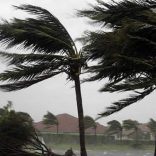Weather Alert: Strong winds forecast for southern Mozambique
Mozambique: Hidden debts pushed 2 million under poverty line – NGO

Screen grab: CIP
Nearly two million Mozambicans have fallen below the poverty line because of the hidden debt scandal, according to a report presented on Thursday by a Mozambican non-governmental organisation (NGO).
“One of our findings regarding the social costs is that the hidden debts have pushed almost two million Mozambicans below the poverty line,” Edson Cortez, director of the Centre for Public Integrity (CIP), a Mozambican non-governmental organisation (NGO), said on Thursday.
The figure corresponds to 6.6% of the current population of around 30 million people.
He was speaking during the presentation of the study carried out between 2018 and 2021 by CIP and the Christian Michelsen Institute (CMI) of Norway on “Costs and Consequences of Hidden Debts for Mozambique.
“The best and simplest general measure of the damage is the drop in the value of Gross Domestic Product [GDP] caused by the debt, which we estimate at $10.7 billion [€8.78 billion] over the four-year period,” the document said.
Added to this figure are direct costs “incurred up to and including 2019” of $674.2 million (€553 million).
The NGO blames European bankers, businessmen based in the Middle East, politicians and senior state officials for having colluded in a scheme that “committed Mozambique to a debt of over $2 billion (€1.6 billion)” in which “the proceeds of this fraud were divided among them” and “this cost Mozambicans over $11 billion (€9 billion) between 2016-2019 alone – $403 (€330) per citizen,” the study concluded.
In addition to this loss, “over the next ten years, Mozambique is scheduled to pay around $4 billion (€3.2 billion) more in direct costs [debt servicing], not counting the incalculable economic loss” that will continue to be felt.
For the CIP, Mozambique “threw away” money that would be very important to invest in building 56,000 classrooms and 898 hospitals.
“Today, we still have women go into labour outside hospitals because there are no beds, but the Mozambican government at the time preferred to do a deal whose benefits are doubtful because nobody sees them,” said the CIP director.
This report “may help the Attorney General’s Office to defend itself in the various jurisdictions” where cases related to the case are underway, “showing how this whole corruption scandal has damaged the country,” noted Edson Cortez.
“The hidden debts occurred like a huge earthquake in the Mozambican economy. An earthquake, after it happens, has aftershocks, and they were felt in the fiscal area, in inflation, at the monetary level and in exchange rates, and that is what created a great impact and the financial crisis that the country is going through,” he said.
The hidden debts relate to US$2.2 billion (€1.8 billion) of credit obtained between 2013 and 2014 from the British subsidiaries of investment banks Credit Suisse and VTB on behalf of Mozambican state companies Proindicus, Ematum and MAM.
Mozambique claims that the then finance minister, Manuel Chang, did not have the authority to sign the sovereign guarantees that supported the debt and is now seeking to annul part of them in court.
COSTS AND CONSEQUENCES OF THE HIDDEN DEBT SCANDAL OF MOZAMBIQUE https://t.co/SxNPwmawbD
— CIP-Mozambique (@CIPMoz) May 27, 2021












Leave a Reply
Be the First to Comment!
You must be logged in to post a comment.
You must be logged in to post a comment.